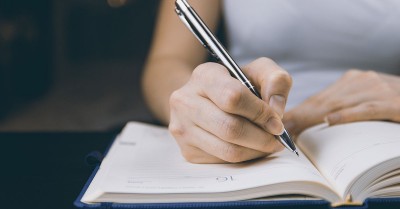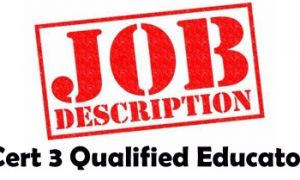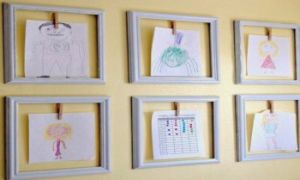The idea of learning notes offers an assessment method that is thorough and efficient in terms of time. In addition to allowing Educators to carry out a variety of assessments across the Approved Learning Frameworks, learning notes can be created more frequently and are time-saving. The following article provides information on the Components Of Learning Notes, How To Write Learning Notes, Examples Of Learning Notes and more.
Learning notes, developed by Ken Blaiklock, do not follow a narrative format. They are less time-consuming and can be completed efficiently and regularly. They can be used to give a clear, short account of an event that can be interpreted as the child's learning.
Components Of Learning Notes
There are three components of Learning Notes, which include:
-
Describe – this covers a few sentences that describe a child’s involvement in a learning experience and usually includes information about the child’s name, place and time of the event, other participants involved, knowledge, skill or attitudes demonstrated and language expressed. The description should be written at the time of the Educators observation or as soon as possible after the event. Blaicock is emphatic that the description section of a Learning Note should be written in a clear descriptive language with minimal interpretation.
-
Interpret - Blaiklock even suggests that sometimes only the ‘describe’ section of a learning note is needed, particularly where accomplishments are obvious. However, in order to highlight the learning that has taken place, it is important to include another section in the learning note – interpret. This usually includes a comment that highlights the significance of the learning that the child has demonstrated in the event. Ideally, interpret section should also make connections with the learning outcomes listed in the approved learning framework.
-
What next – this section in a learning note is for an educator to record ideas for extending and following on from what was observed. According to Blaicock, such ideas should be enacted as soon as possible after the observation.
If appropriate, can also include an:
- interpret section –a comment that highlights the significance of the learning.
- could be linked with principles, strands, goals, and indicative learning outcomes of EYLF/MTOP
- could help to show that a range of learning areas are being assessed.
How To Write Learning Notes
While it is clear that learning notes offer several advantages, for them to be effective as tools for assessment, it is important to be mindful of the following:
- Make it specific - When recording observations, educators should describe in the event with concrete and enough details to inform future teaching strategies. For example, a statement such as “The student was on task” provides no information about the task or the behaviour; on the other hand, a statement like, “The student built a tower from coloured cubes, creating an AB pattern after looking at a card that showed a similar alternating pattern” provides specific evidence of the child’s achievements.
- Link it to a learning area – to prevent learning notes from sounding vague, list the associated learning centre or subject area. For example, for instead of just stating, “Leah uses inventive spelling,” a learning note could mention the centre the child was playing in and evidence of the inventive spelling, like “Leah—Dramatic play centre—Wrote grocery list: BACN, aGS, sreL.” Such a note not only gives insight into the letter forms the child can produce, but also marks their progress on the continuum toward standard spelling, helping the educator be more informed about how to support the child's instruction.
- Keep it short – if taking down such observations as the events are happening to seem challenging, consider using abbreviations like DP for dramatic play centre in the above point. If time is short, the educator could also take a photo of the child’s writing and embed it along with the learning notes in the child’s portfolio.
- Be neutral - Like other forms of interpretative records, learning notes also have the potential to be framed in accordance with the educator’s inner assumptions and biases. So when using this form of documentation, it is extremely important to remember that these are meant to be neutral observations of a child’s behaviours and interactions.
Examples Of Learning Notes
- Describe - After lunch, Kayla spent about 20 minutes riding up and down the sloping path on the trike. She called out, “I’m
- very fast.”
- Interpret - Kayla has become more confident in using the trike since she developed the motor skills needed to use the pedals (a
- skill typically found for three-year-olds)
- Links with EYLF Outcome 3 - Children Have A Strong Sense Of Wellbeing
- Describe - Kahu sat at the art/writing table for about ten minutes. He worked independently, trying out different pens and colours. He nearly always used his left hand, often using a “fist grip” to hold the pens. He then presented his work to me and said “This is a letter for you. Read it.”
- Interpret - Kahu appears to be showing a preference to use his left hand when writing/drawing and is trying out ways to hold a pen. His “letter” showed a mixture of lines at different angles and repeated patterns. He had repeatedly written “K,” the first letter of his name. He displays an understanding that writing involves repeated symbols and letters, and that it can be “read” by other people.
- Links with EYLF Outcome 5 - Children Are Effective Communicators
- What next? - Tomorrow I will give Kahu an envelope with his name written on it, containing a letter from me to Kahu that thanks him for his letter. I will show Kahu some blank envelopes and paper and ask if he would like to write some more “letters”. This will provide me with opportunities to talk about what he would like to write and to provide guidance with writing the letters in his name and using the correct pencil grip. I will encourage him to use triangular-shaped pencils to assist with this.
Benefits Of Learning Notes
- Ease of use - Educators generally engage with and observe children informally, thus the principles underpinning learning notes are naturally followed. Since learning notes can be informal jottings, these can be easily recorded by educators, even on post-it notes that can later be included in the child’s portfolios. Learning stories on the other hand are to be written in narrative formats which require more concerted focus and a requisite level of skill on the part of educators.
- Speed - Due to their note-like format, learning notes are generally quick to write, making them a more prompt method of assessment. This indicates that the assessment is made quite soon after the learning event so that strategies for its continuation can be swiftly put into action. Each week, Educators might be able to complete numerous learning notes for every student.
- Enabling Additional Interpretations - Since first observations are (hopefully) recorded without interpretation, they can be discussed and shared with families and coworkers to receive additional interpretations. When the teacher's interpretation is woven into the account of an event, as with a narrative type of assessment, it can be more difficult to facilitate this. To get rich and various perceptions from non-observers, more description in the "describe" portion will be needed.
- Less time-intensive – the chief advantage of learning notes is that they can be quickly jotted down even as an educator is observing a child; learning stories on the other hand take longer since they are to be written in greater detail and link the key moment to what happened before and what follows after.
- More room for additional interpretations - While writing learning notes, it is enough for educators to jot down initial observations. At this level, the notes are easier to share with families and colleagues to invite further interpretations. A learning story, however, already includes the educator’s analysis of the event so by the time it is shared with families, it can leave little room for their interpretations and feedback.
- Lends better to future planning – one of the goals of formative assessments is to contribute to planning future learning experiences. In the case of learning stories, this becomes challenging because they are often situation-specific and posit only a small sample of the child’s experience at the centre. also because of the longer time needed, learning stories are made rather infrequently, perhaps once a month. All this makes learning stories less suitable as a base for individualised planning for future learning experiences. Learning notes on the other hand can be recorded far more frequently – perhaps several brief ones for every child in a week. Also, the flexibility in recording implies that ideas for future learning experiences – for example, in response to an interest demonstrated by a child – can be followed up later in the day or the next day. All this lessens the time lag between the initial observation, writing up of the event and implementation of suggestions for future experiences that are more common in learning stories.
- Formative - ongoing “assessment for learning”. The flexibility and ease of recording Learning Notes mean that they can be made more frequently and should be of more value for planning future learning experiences than Learning Stories.
- Summative - to “sum up” a child’s performance in a particular area of learning and development. For example, a learning outcome in EYLF or an area within another framework of early learning Will require collecting a range of Notes on the same area. Blaicock points out that learning notes can also contribute to summative assessment. Educators can record information that shows children’s achievements in particular areas of learning. By linking such achievements to goals and learning outcomes of the approved learning framework, a more objective and comprehensive assessment can be obtained.
Learning Notes are used to help communicate children’s early learning experiences and are short observations with associated learning outcomes. They are used for formative and summative assessments.
Further Reading
Observations in Childcare - The following article provides information on the purpose of observations, during the observation, interpreting observation, linking to the curriculum and more.
Different Types Of Observation Methods - The following article provides different types of observation methods that can be used to observe a child.
Descriptive Words For Documentation, Observations and Reports - The following is a list of descriptive words that can be used while writing.
References:
- Learning Journeys Useful Or Not, Early Years Careers
- Learning Notes An Alternative To Learning Stories, The Education Hub
- Learning Notes, Assessment In NZ







 Here is the list of the EYLF Learning Outcomes that you can use as a guide or reference for your documentation and planning. The EYLF
Here is the list of the EYLF Learning Outcomes that you can use as a guide or reference for your documentation and planning. The EYLF The EYLF is a guide which consists of Principles, Practices and 5 main Learning Outcomes along with each of their sub outcomes, based on identity,
The EYLF is a guide which consists of Principles, Practices and 5 main Learning Outcomes along with each of their sub outcomes, based on identity, This is a guide on How to Write a Learning Story. It provides information on What Is A Learning Story, Writing A Learning Story, Sample
This is a guide on How to Write a Learning Story. It provides information on What Is A Learning Story, Writing A Learning Story, Sample One of the most important types of documentation methods that educators needs to be familiar with are “observations”. Observations are crucial for all early childhood
One of the most important types of documentation methods that educators needs to be familiar with are “observations”. Observations are crucial for all early childhood To support children achieve learning outcomes from the EYLF Framework, the following list gives educators examples of how to promote children's learning in each individual
To support children achieve learning outcomes from the EYLF Framework, the following list gives educators examples of how to promote children's learning in each individual Reflective practice is learning from everyday situations and issues and concerns that arise which form part of our daily routine while working in an early
Reflective practice is learning from everyday situations and issues and concerns that arise which form part of our daily routine while working in an early Within Australia, Programming and Planning is reflected and supported by the Early Years Learning Framework. Educators within early childhood settings, use the EYLF to guide
Within Australia, Programming and Planning is reflected and supported by the Early Years Learning Framework. Educators within early childhood settings, use the EYLF to guide This is a guide for educators on what to observe under each sub learning outcome from the EYLF Framework, when a child is engaged in
This is a guide for educators on what to observe under each sub learning outcome from the EYLF Framework, when a child is engaged in When observing children, it's important that we use a range of different observation methods from running records, learning stories to photographs and work samples. Using
When observing children, it's important that we use a range of different observation methods from running records, learning stories to photographs and work samples. Using The Early Years Learning Framework describes the curriculum as “all the interactions, experiences, activities, routines and events, planned and unplanned, that occur in an environment
The Early Years Learning Framework describes the curriculum as “all the interactions, experiences, activities, routines and events, planned and unplanned, that occur in an environment


